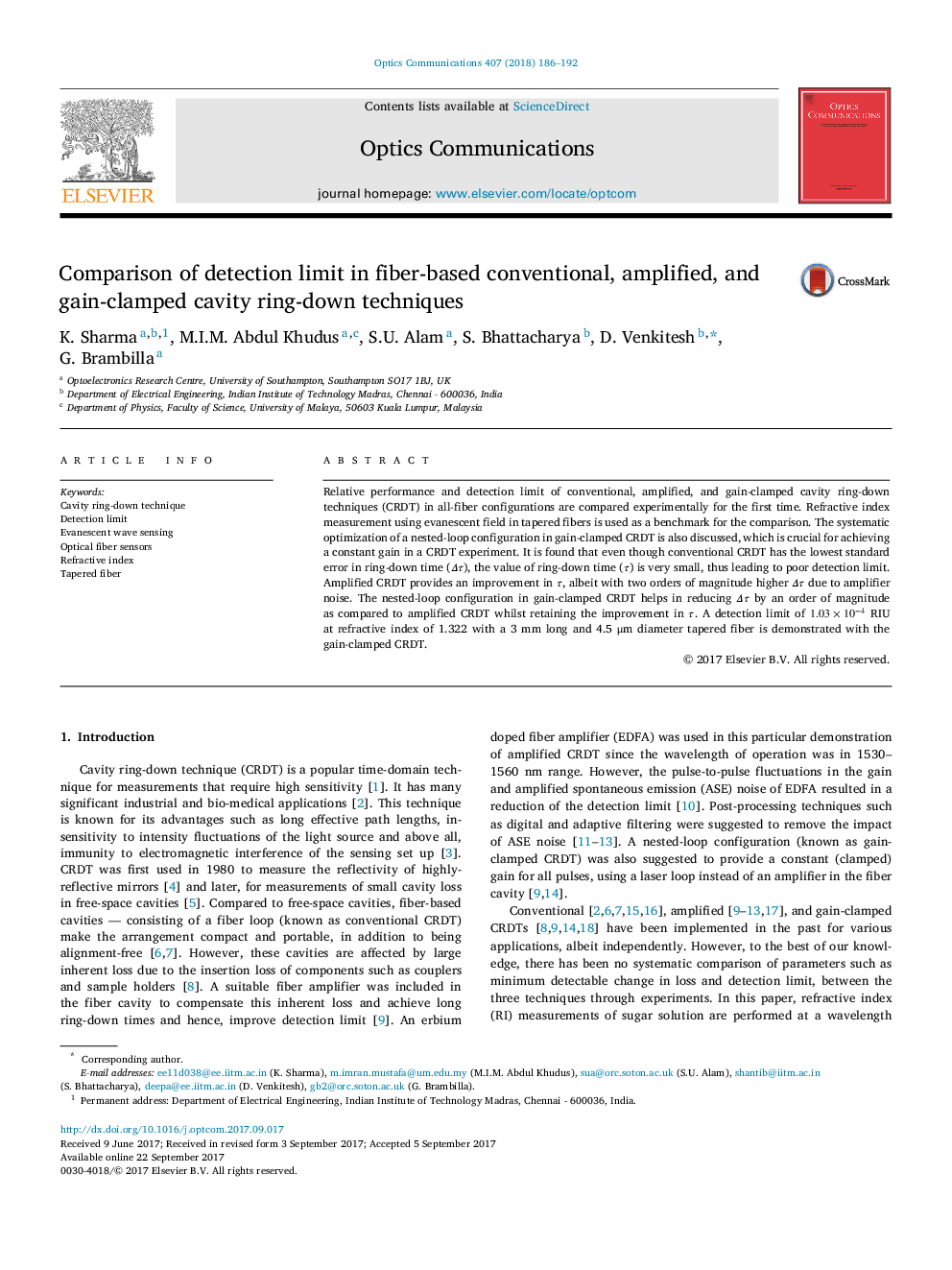| Article ID | Journal | Published Year | Pages | File Type |
|---|---|---|---|---|
| 5448963 | Optics Communications | 2018 | 7 Pages |
Abstract
Relative performance and detection limit of conventional, amplified, and gain-clamped cavity ring-down techniques (CRDT) in all-fiber configurations are compared experimentally for the first time. Refractive index measurement using evanescent field in tapered fibers is used as a benchmark for the comparison. The systematic optimization of a nested-loop configuration in gain-clamped CRDT is also discussed, which is crucial for achieving a constant gain in a CRDT experiment. It is found that even though conventional CRDT has the lowest standard error in ring-down time (ÎÏ), the value of ring-down time (Ï) is very small, thus leading to poor detection limit. Amplified CRDT provides an improvement in Ï, albeit with two orders of magnitude higher ÎÏ due to amplifier noise. The nested-loop configuration in gain-clamped CRDT helps in reducing ÎÏ by an order of magnitude as compared to amplified CRDT whilst retaining the improvement in Ï. A detection limit of 1.03Ã10â4 RIU at refractive index of 1.322 with a 3 mm long and 4.5 μm diameter tapered fiber is demonstrated with the gain-clamped CRDT.
Related Topics
Physical Sciences and Engineering
Materials Science
Electronic, Optical and Magnetic Materials
Authors
K. Sharma, M.I.M. Abdul Khudus, S.U. Alam, S. Bhattacharya, D. Venkitesh, G. Brambilla,
